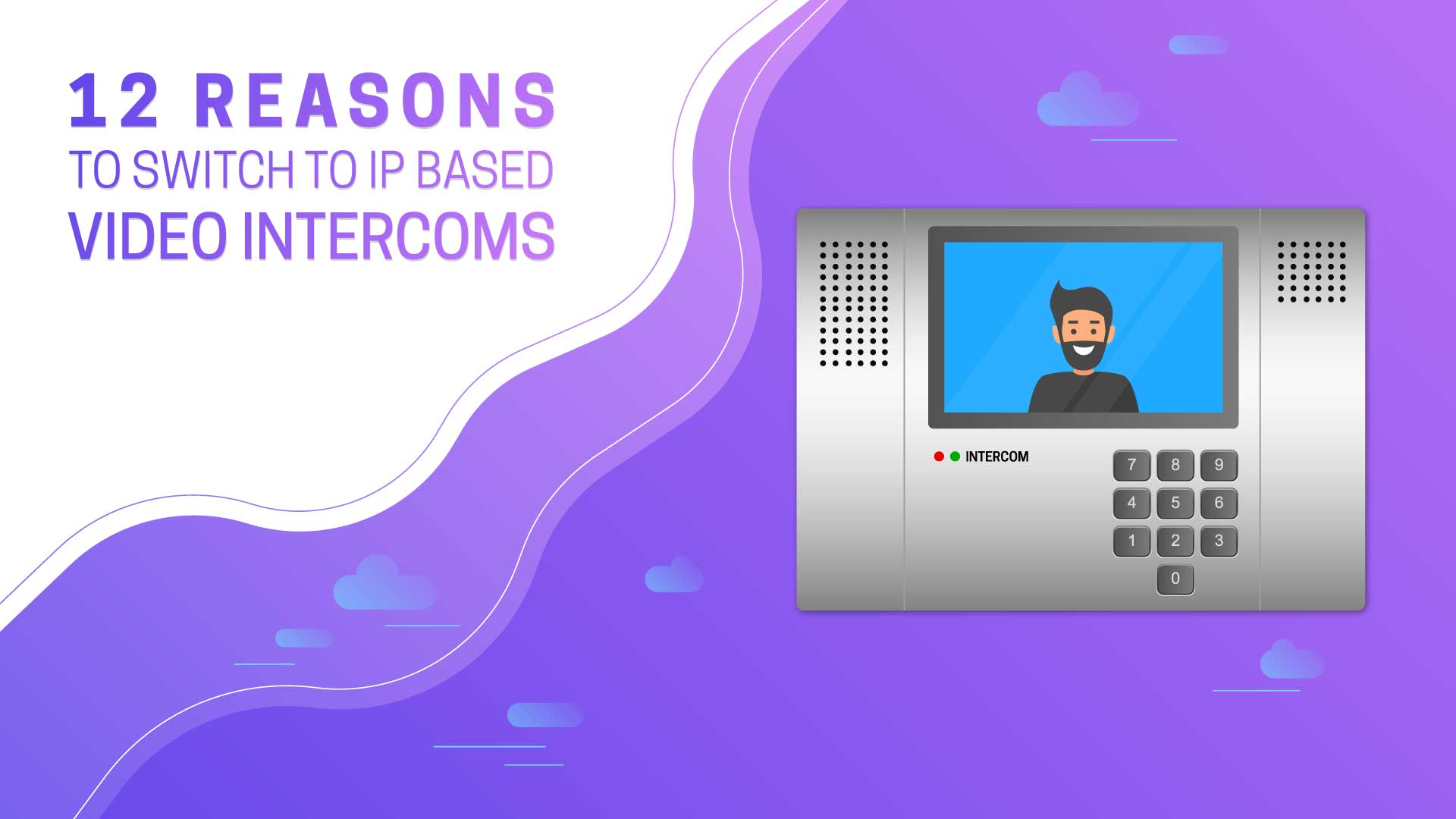“Freedom, Security, Convenience – choose two.”
-Dan Geer, Computer Security Analyst and Risk Management Specialist.
IP based Video Intercoms are state of the art intercoms which leverage IP (Internet Protocol) technology. IP convergence technology transports audio, video and data using a single channel like LAN (Local Area Network) or WAN (Wide Area Network). Residences, gated communities, educational institutions, health facilities, offices, commercial spaces widely use IP Intercoms. Places where visitors frequently request entry need an intercom for ease of operation.
IP based video intercoms offer a wide range of benefits in comparison to their analogue predecessors. The following are some of them.
1. Ease of Installation
Setting up wires for an analogue intercom could be laborious. On the other hand, IP intercoms function on wired, wireless or fibre infrastructures capable of transporting TCP/IP. The installation will be simplified as they support POE (Power over Ethernet) which implies that a single cable can transmit audio, video and power. It means that IP intercoms do not need setup of any additional hardware other than the ones you possess and therefore saves time.
2. Cost Effective
IP intercoms are technologically more advanced than analogue intercoms and perceived to be expensive, which isn’t the case. Users can save cost by monitoring manifold locations without employing extra staff. They can utilise the existing network or install a new cable to support multiple data types to gain better returns from their investment. IP intercoms deliver superior quality of audio and video compared to the analogue ones, which helps recover any cost difference.
3. Security
IP video intercoms offer greater privacy to users as they can view the video of visitors before speaking to them. They can opt to answer only with audio. IP video intercoms can be deployed to monitor property round the clock from a remote location. Some intercoms also allow users to save previous pictures for future viewing.
4. Flexibility
IP video intercom supports SIP, which allows integration with IP telephony. It enables the ability to forward video and audio calls from the door station. Desk phones or a mobile device placed anywhere can be used to answer the calls. This facility of call forwarding enhances the flexibility of the surveillance solution and also makes daily operations more effective.
5. Scalability
IP Intercoms do not need a dedicated head-end. The signals need not be brought together nor monitored, unlike their analogue counterparts. The endpoints can be managed completely using software which makes IP intercom a plug and play device. Hence, this facilitates the growth, from a single IP intercom to a network of IP intercoms. A node can be added anytime, depending on expansion plans or budget.
6. Fully Integrated
IP video intercom seamlessly integrates audio and video. It delivers video with HDTV quality, digital PTZ (Pan-Tilt-Zoom), video analytics and edge storage. High-tech cameras can use audio for recordings, detecting and triggering alarms. They perform flawlessly under low light and strong backlight conditions.
7. Advanced Technology
Recent models of IP intercoms capitalise on the latest generation of IP technology, IPv6 (Internet Protocol version 6). It is much faster than its previous versions, and the ability to increase the number of endpoints is unlimited.
8. Open Standards
IP intercoms utilise open and international IP standards such as ONVIF and SIP. It offers freedom of choice as users can combine products from different manufacturers. They can connect disparate systems and devices without worrying about compatibility issues. This interoperability provides full flexibility to the security staff. They can monitor and react to suspicious incidents efficiently.
9. Camera Intelligence
High-end IP video intercoms are designed using cutting edge technology of VCA (Video Content Analysis). VCA supports features such as motion detection, cross line detection to automatically trigger an event.
10. High Resolution
The quality of an analogue signal drops when transported over a distance or when converted to other formats. However, the quality of an image from an IP intercom will not degrade when transmitted over long distances or when converted. IP video intercoms provide high resolution in contrast to analogue intercoms. They use progressive scanning to produce superior image quality while analogue intercoms use interlaced scanning, which gives blurred images.
11. Audio Clarity
IP video intercoms provide excellent audio quality. It includes echo cancelling, sound amplification and noise filtering.
12. Failover Support
IP intercoms are programmed to use a secondary command centre in case the primary command centre malfunctions. If deployed, multiple command centres can also handle a large number of calls.
Employing IP video intercoms for point-to-point communication requires network planning. Bandwidth must be taken to account before adding a new device. Security must be carefully planned, as a new endpoint also creates a potential entry point for hackers.
IP based video intercoms are smarter, safer, versatile and cost-efficient than analogue intercoms and are here to stay.



No comments yet.
Leave a Comment
Let us know your thoughts on this !